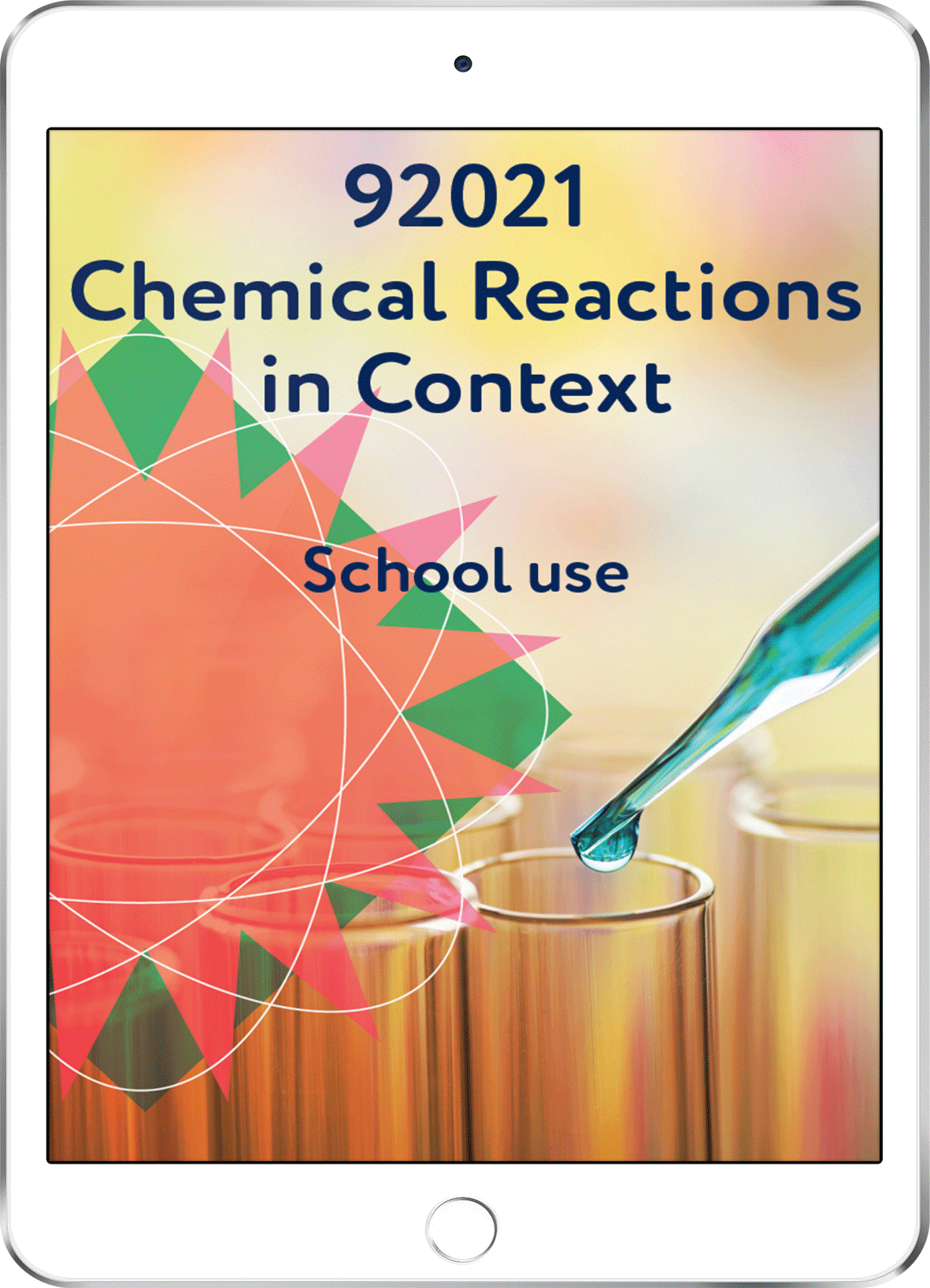92021 Chemical Reactions in Context - School Use
92021 Chemical Reactions in Context - School Use
LearnWell
This version of the resource is for school use. Teachers can facilitate, and load students from their class. If you are not using this resource in class, you should purchase the home use version.
New NCEA Achievement Standards
Couldn't load pickup availability
This resource covers the things you need to know and be able to do for the NCEA Level 1 Achievement Standard 92021 (Chemistry and Biology 1.2) Demonstrate understanding of chemical reactions in context.
What you'll learn
Throughout this resource, we’ll introduce you to some different types of chemical reactions in the contexts of food (kai), water, the land and you. You’ll explore patterns in these different types of reactions by carrying out model reactions in the lab and interpreting chemical equations.
You’ll work through eight sections:
1. Atoms, ions and the periodic table | Ngā ngota, ngā katote me te taka pūmotu
You’ll start by reviewing the structure of atoms and the information the periodic table can give us about different elements. You’ll review how and why atoms form ions and how those ions combine into ionic compounds.
2. Chemical reactions and equations | Ngā tauhohe me ngā whārite matū
Next, you’ll learn how to count the atoms in chemical formulas and look at the formulas for different types of substances. You’ll practice reading and writing chemical equations and identifying the information they can give us.
3. Combination reactions | Tauhohe pāhekoheko
The first of the reactions you’ll learn about are combination reactions. You’ll learn their general form, how they occur, and look at their use in industry and their impact on the taiao (environment).
4. Decomposition reactions | Tauhohe wāwāhinga
Decomposition reactions are the opposite of combination reactions. In this section, you’ll learn their general form, how they occur, and look at their uses in different industries and in the kai you eat.
5. Combustion reactions | Tauhohe ngingiha
Next, you’ll learn the general form of combustion reactions and the difference between complete and incomplete combustion. You’ll investigate combustion reactions in the fuels we use to prepare kai and keep ourselves warm and learn about the impact on the taiao when we burn fossil fuels.
6. Precipitation reactions | Tauhohe huatoka
You’ll explore which ionic compounds dissolve in water and which ones don’t, then look at the general form of precipitation reactions when a solid ionic compound forms from ions dissolved in solution. You’ll discuss the patterns in these reactions and learn how they can be used to clean up our arawai (waterways) that have too many nutrient ions in them. You’ll also model some of the precipitation reactions that happen in your tinana (body).
7. Neutralisation reactions | Tauhohe whakangū
The last type of reactions you’ll learn about are neutralisation reactions. You’ll revise what you already know about acids, bases, and pH, and then learn the general form of the reactions that happen between acids and bases. You’ll explore the neutralisation reactions that happen in your tinana and in the soil when it’s prepared to grow the kai you eat.
8. Practise interpreting chemical reactions in context | Te whakamāori ā-horopaki i ngā tauhohe matū
Finally, you’ll bring all your mātauranga (knowledge) together and practice identifying the five different types of reactions from chemical equations and the observations you’ve made in the laboratory.
LearnWell Digital resources put the learner at the centre. Using almost any device, students can easily work at a pace that suits them through interactive, scaffolded learning and activities.
For the print format of this resource, click here.

